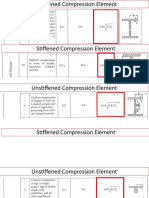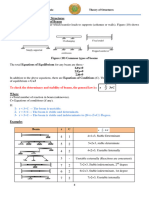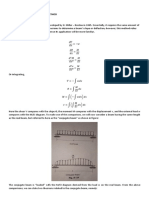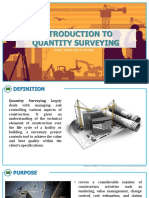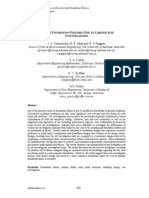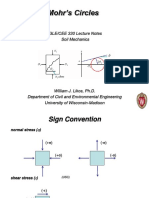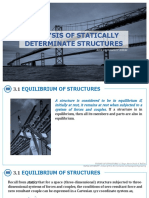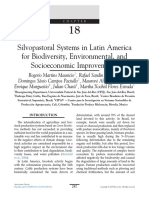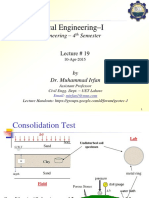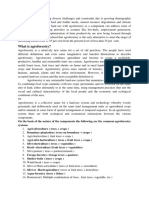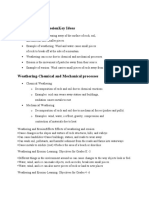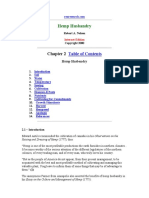GEOTECHNICAL ENGINEERING 1
CHAPTER 1
INTRODUCTION TO GEOTECHNICAL
ENGINEERING
References:
An Introduction to Geotechnical Engineering by: Robert Holtz, William
D. Kovacs, and Thomas C. Sheanan
Introduction to Geotechnical Engineering by: Braja M. Das
�DEFINITIONS
Geotechnical Engineering- subdiscipline of civil engineering
that involves natural materials found close to the surface of
the earth (soil and rock). It includes the application of the
principles of soil mechanics and rock mechanics to the
design of foundations, retaining structures, and earth
structures.
Soil Mechanics- deals with the study of physical properties of
soil and the behavior of soil masses subjected to various
types of forces.
Soil unconsolidated or uncemented aggregate of mineral grains and
decayed organic matter with liquid and gas in the empty spaces between
the solid particles.
� DEFINITIONS
Foundation Engineering applies engineering geology,
soil mechanics, rock mechanics and structural
engineering to the design and construction of
foundations for civil engineering and other structures.
Rock Engineering- analogous to foundation
engineering for soils, is concerned with rock as a
foundation and construction material.
Geoenvironmental Engineering- interdisciplinary
field that is involved in the solution of
environmental problems involving soil and rock.
�UNIQUE NATURE OF SOIL MATERIALS
Gravel
Silt
--cohesionless-- Sand
--cohesive--
Clay
�Unique nature of soil materials
Soils are particles of rock- broken up pieces of rock.
Soils are heterogeneous rather than homogeneous materials.
Soils are nonlinear-their stress-strain curves are not straight
lines.
Lets complicate things!!!
Soils are non-conservative-they have fantastic memory- they
remember almost everything that ever happened to themthis fact strongly affects their engineering behavior.
Soils are anisotropic-their material or engineering properties
are not the same in all directions
� Remember
A successful geotechnical engineer must develop a feel for soil
and rock behavior before a safe and economic foundation or tunnel
design can be made, an earth structure can be safely built, or an
environmentally sound waste containment and disposal system or
a site remediation plan can be developed.
To summarize..
Soils and Rocks are indeed complex engineering and
construction materials.
� Historical Background
Geotechnical engineering began in 18th century.
Geotechnical engineering was based on past
experiences without any real scientific character.
Many structures were built-some of which have
crumbled-some are still standing
�Historical Background
Built prior to 18th century in Italy
Supported by a circular base
of 20m
Tilted by more than 5m out of
plumb to south with the 54m
height
Weak clay layers exists at a
depth of about 11 m below the
ground surface
Stabilized by excavation-now
leans
5
degrees.
Leaning Tower of Pisa
� Historical Background
Built 12th century in Italy
Garisenda tower tilted 4
degrees
Asinelli tower tilted 1.3
degrees.
Garisenda Tower (left) and Asinelli Tower (right)
�Geotechnical Engineering after 1927
Father
of modern
Soil
Mechanics
C.A.Coulomb
1736-1806
Karl Terzaghi
1883-1963
A.Casagrande
1902-1981
WJM Rankine
1820-1872
A.W.Skempton
1914
R. Peck
�Geotechnical Engineering Landmarks
Tallest (221 m)
concrete dam
Hoover Dam (USA)
�Geotechnical Engineering Landmarks
Tallest (829.8 m)
Man made structure
Burj Khalifa (Dubai)
�Geotechnical Engineering Landmarks
Monuments
and.
13
� Suggestions to the Study of
Geotechnical Engineering
Attend the lectures- it takes longer to understand from the lecture notes
Develop a good feel for the subject - it is
practical, interesting, and makes a lot of sense
Approach to the Study
Knowledge of geology
Knowledge of engineering mechanics, strength
of materials and fluid mechanics
Performing laboratory tests and field tests
�Some suggestions:
WORK HARD
�Some suggestions:
DO NOT WAIT FOR THE LAST MINUTE
�LETS BEGIN------Think about:
Soil mechanics point of view
How much soil will deform when it is loaded?
When loads are applied, on what rate does soil deform?
How much load can we apply to soil before it fails?
How does soil fails?
Fluid mechanics issues
How does water flow through soils? (How fast?)
How can fluid flow through soil cause it to fail?





